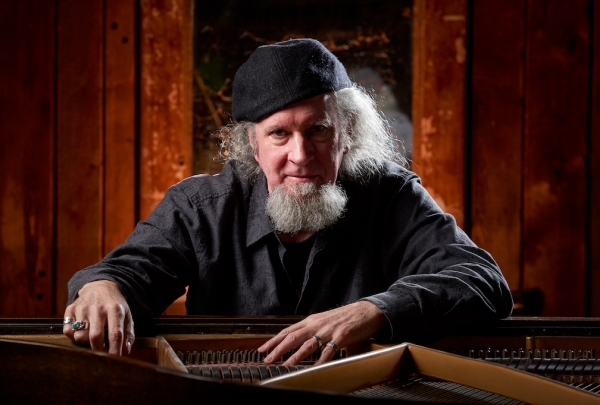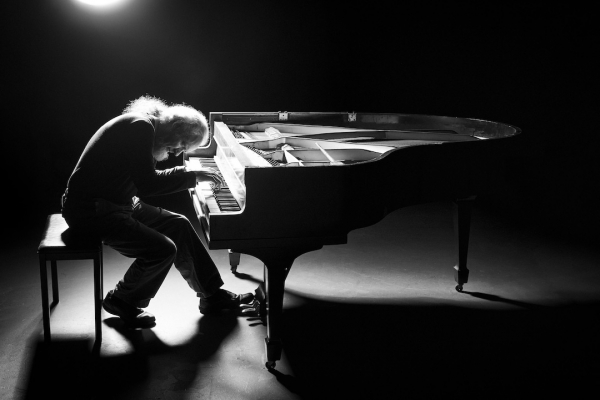This is my third interview with Tobin Mueller, an artist whose albums I've been reviewing since his 2005 solo piano release,
Morning Whispers. To refer to Tobin as a "Renaissance Man" is a gross understatement, as this interview clearly indicates. This interview focuses mainly on Tobin's five-volume
Best Of Tobin Mueller series that was released over the course of the first half of 2023 as well as touching on a few albums since our previous interview in early 2019. If you'd like more information about Tobin's background, you can check out the interviews we did in
2019 and
2009. Enjoy!
KP: Hi Tobin! How are things back east today?
TM: The weather has been so good here, our backyard gardens are almost tropical. Greener than ever. And we just put up a new fence to keep out the ravaging deer. Life is good.
KP: Even after two extensive interviews and reviews of thirty albums (many of them double albums!) since 2005, I'm still blown away by your versatility in both your playing and composing.
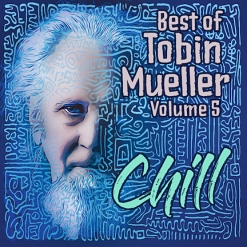
Click on album covers
to go to Kathy's reviews.
TM: Thank you. That’s very kind. I have a restless mind and so many interests, one lifetime hasn’t been long enough to pursue them all. We’ve known each other since 2005, when my solo piano recording career began. But that doesn’t take into account the prior decades of theater I was involved in, the dozen musicals I composed, the symphonies and ballets, the 350 songs I wrote before 2005, the film scores, etc. You met me when I was shedding all of that, tired of the New York rat race. Morning Whispers was my Act 2, the first music I composed “for myself”, with no attachment to a stage show or an upcoming tour. The experience was so fulfilling, I continued doing it for another 30 albums. (I appreciate your early encouragements.)
When I was growing up, I was exposed to every kind of music (or so I thought). Debussy, Gershwin, Beethoven, Hoagy Carmichael, Glenn Gould, Woody Herman, Bach and Brubeck all mixed together in my house. Then, The Beatles arrived, then Joni Mitchell, then Cream and Led Zeppelin. Then Jesus Christ Superstar, Yes, Emerson Lake & Palmer. On top of that, when I was 16, I discovered old recordings of the Bop masters: Charlie Parker (I played saxophone back then too), Dizzy Gillespie, Thelonious Monk... which helped me discover Chick Corea, Herbie Hancock, Keith Jarrett. If I was to truly explore all this music, this ever-evolving genius, if I would ever have a hope of integrating this genius into my own emerging talent, I had to go down many roads. How could I not have a restless mind?! Much of my music combines slivers of each of these people. We stand on the shoulders of giants.
KP: Indeed! It seems that the vast majority of your albums have had a specific reason for being created - they aren't about writing ten or twelve tracks and putting them on an album. They strongly reflect specific ideas and things that are directly influencing you - and sometimes the rest of the world - at the time. I'm sure there are endless ways to start a recording project, but how does it work for you - just generally. Do you start with a theme and work with that or write a few pieces and then find a common theme? Or is the origin of each album unique to itself?
TM: Coming from musical theater, I’m used to putting together visual with audio, telling multi-act stories one song at a time. That “habit” translated into how I planned and produced my albums. I’ve been a playwright and director as well as a composer, authored books as well as lyrics, created digital art as well as done professional photography. I come at projects from many angles and like to be involved in all aspects of a production. I “visualize” albums, as well as “hear" them.
Most albums are a synergy of my at-the-time personal curiosity and my long-term career arc. For example, when I did my Chopin double album Of Two Minds, I hadn’t played his music in decades and was curious how rediscovering it in detail would affect my ‘matured’ compositional style. Plus, I had never delved deeply into the writings of George Sand, which had always intrigued me. So I combined those two curiosities, played through Chopin’s piano works, developed new arrangements, all the while aware of how his music had already affected my own style. It enabled me to purposefully discover new ways of playing, of expressing emotions. Chopin was both freeing me and guiding me. Then I set about writing my own Chopin-inspired sonatas, combining classical romanticism with modern modal jazz. And, to be honest, I didn’t pick Chopin at that moment merely because of his great music: I had fallen sick and was getting sicker, then got a diagnosis complete with a fast approach expiration date (which I have since passed, luckily). This awoke in me an even stronger affinity to Chopin, due to his own health struggles. Everything coincided.
The same sort of experience happened when I recorded my second solo piano album, 13 Masks, only this time it happened through researching Thelonious Monk. Finding old videos of him playing, watching how he exploded into unexpected phrasings, hacked up certain rhythms to accentuate others, broke old rules (that would create all new ones), I was both freed and guided, again. We had masks on the walls of our home, as artwork, from several cultures. Imagining how these artists felt while carving and painting dream states and ghosts and unusual deities, shaped what was happening to me at the keyboard. I was both inspired and directed, actively evolving as a player and composer. I paired each piece with a mask I found in a old German book and redrew them for the album cover. 13 Masks’ subtitle became “music from the subconscious”.
On the other hand: Prestidigitation (2022) was more of a business decision. My studio (Factory Underground Studio) had wanted me to record a follow-up to my 2018 double album Standard Deviations (in which I reimagined 33 early Jazz Standards), due to its success. So I chose the second generation of Jazz Greats, the fusion masters Chick Corea, Herbie Hancock, Frank Zappa, etc. It was just about the music, about shining fresh light on the fusion and funk masterpieces of, mainly, the 1970s. It became my most-played album, was even considered for a Grammy. So, maybe I should have concentrated on the music-only part of the business earlier? ;-)
KP: Your most recent project is a series of five Best Of Tobin Mueller albums. These are all double albums and each targets a fairly specific genre:
Vol. 1 is a collection of 21 Jazz Originals
Vol. 2 is 20 Jazz Arrangements
Vol. 3 is 22 Prog Fusion tracks
Vol. 4 is 25 Vocal tracks
Vol. 5 is 26 Chill tracks
How did you decide which pieces to use?
TM: My career has spanned many music genres: I’ve played and composed contemporary jazz with large and small ensembles, written stage musicals, classical orchestral works, film scores, adult contemporary pop songs, tangos, progressive rock, blues and funk. I wanted to gather them into rational categories for better marketing, easier promotion. I didn’t want the albums to be as long as they ended up, but when push came to shove, and since the series was going to be digital-only, I simply picked the songs that I wanted as a part of my legacy. We ended up working with 118 tracks, 4 of which got dropped because we couldn’t fix them well enough.
My producer never wants me to put out double albums. He thinks albums should be short. He prefers 7 tracks, 9 at the longest. But I am too impatient to get on to the next thing. I simply make too much music. If I didn’t put out double albums, it would slow me down starting the next project.
114 tracks is a crazy long project. We remixed, remastered, layered in new performances, and completely redid a few pieces… all in about 6 months. I don’t think my producer was paying attention when he agreed to all this. When we were half way through, he needed a vacation.
KP: I'm not surprised! What made you want to take on such a massive recording and re-recording project?
TM: It kind of snowballed. One of the reasons for doing a “Best Of” series was to create definitive versions of my best work. I wanted to fix a few recordings that were of performances I thought should be preserved. Several of the old recordings were mixed badly, had distortions, terrible room ambience, limited EQ expressiveness, etc. Also, a handful of recordings had been edited, years ago, and I’d always been disappointed that certain solos got axed, or cool variations had been edited out. I could still hear them in my head when the released tracks would get to that point. So I started with those tracks and realized fixing them required overdubs (which was probably why those sections were edited in the first place). So the process, which we thought would be limited to remastering, became much more complicated.

Click on album covers
to go to Kathy's reviews.
Also, once I realized the huge improvement in mastering software that was available to me, I realized we could fix certain tracks I had thought were beyond repair. Software today uses a great deal of Artificial Intelligence and can analyze and alter details very quickly. Especially if the person doing it is as experienced as Kenny Cash, my producer. This enabled me to include several tracks I originally had no hope for.
KP: One of the things that makes this project unique is that the music isn't tracks from previous albums in their original form, as compilations generally are. Let's talk about the process a bit.
TM: Right. Spotify identifies the series as “compilations”, even though only about 50 of the 114 tracks are ‘merely’ remastered. Very annoying, since the albums are not listed under “albums” when searching for them. You have to search “compilations”. Inconvenient, to say the least.
Seventeen of the tracks from Volume 1 are new edits as well as remastered, for example. All but 4 tracks in Volume 2 are completely remixed, many with newly-performed organ or electric pianos layered in. I brought in a hand percussionist from The Netherlands, Ruben de Ruiter, to play conga, bongos, guiro and other instruments to add rhythmic flavor to all the sparse duets I recorded earlier with bass legend Ron Carter and saxophonist Woody Mankowski, transforming the feel and texture of the pieces in Volume 1 and Volume 5. We even brought in a new drummer I discovered from Italy, Ugo Rossi, to add full-kit drumming to 2 recordings on Volume 2. That was hard, because the recordings were not done to a click track. But computers now can take a performance, map out the rhythms onto a digital grid, and let you move the timing left and right to line up with what is already on tape. (Check out “After Hours with Monk” on Vol. 2.)
A few new edits that we did on the small combo pieces required overdubbed piano or cut-and-pasted drumming or a new bass riff, to cover over an otherwise obvious edit. We deployed a bunch of tricks to make each recording sound fresh and perfect. (Cymbal crashes do wonders for this sort thing.)
In addition to new performances and all new edits, each of the 5 volumes has at least 1 track that has never been heard before. Some are old unreleased recordings, but some are newly recorded compositions. Many old “best of” albums used to include a new track or two. That Spotify tossed mine into the “compilations” bin has made promotions much trickier, that’s for sure.
KP: I have been really impressed with the consistency of the sound quality of these albums. So many "best of's" are kind of choppy with different piano sounds, older recording methods, etc. All of the tracks I've heard so far sound fresh and brand new. How did you manage to do that?
TM: I’m impressed and pleased that you noticed! Kenny and I worked very hard on that. Sometimes we were able to remix the piano, when we had a separated multitrack file to work with. But most of the time we were working with 2-track stereo masters that could not be broken apart into separate instrument tracks. The AI mastering programs we worked with enabled us to bring out specific instruments and voices, with the click of a button, and treat certain instruments differently. We had a specific piano sound in mind for the entire project and reshaped each recording to match. We applied specific EQs, frequency compressions, exciters and other filters, and used AI limiters that fluctuated as the recording changed, applying programmable thresholds to pull back or bring out specific frequencies, attacks, etc., tying those thresholds to the volume of other instruments in the mix.
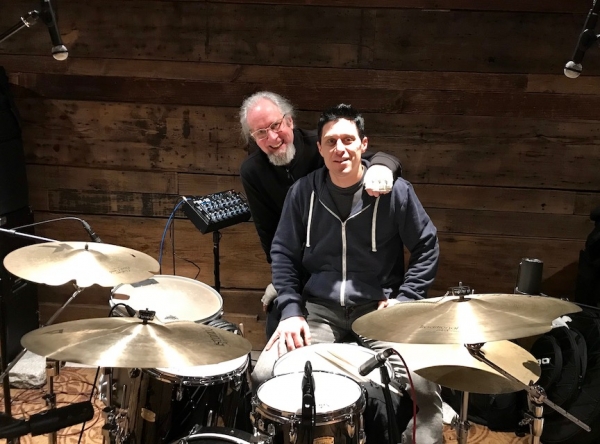
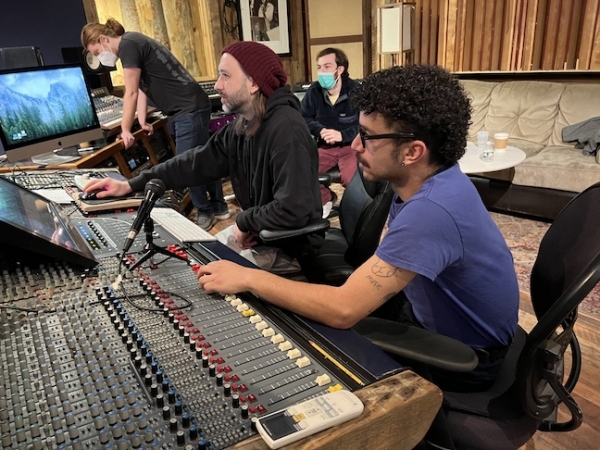
We also brought out the bass playing, since that was one of the things lacking in many of the older recordings. We gave the bass a wider frequency range, boosting volume and accentuating finger sounds. We also gave the drummers more presence, exciting certain frequencies in different places to enable them to shine. Actually, the point of most of our fiddling was to give each separate player more focus, more personality, greater clarity. Each player needs to have a place, visually, in the audio field, both left-right and forward-back, loud-soft, so that the recording feels authentic and alive.
KP: It's really amazing that all of that is possible yet sounds so natural!
You are also working on a Best Of series of your solo piano music. How is that coming along and when do you plan to release it?
TM: I won’t start on
Tobin Mueller: AT THE PIANO until next year. I am determined to spend all of 2023 promoting my 5-volume
Best Of Tobin Mueller series. It is getting wonderful traction, especially on Spotify and YouTube. I am making music videos for almost every track. The series is enabling people to discover stuff I did as far back as 1972. It’s been great fun to have new audiences discover works they never knew I did. Some people just knew me as a Broadway composer. Some as a jazz player. Some as a prog rock guy. Some as a solo pianist. Now there is a place to go and hear it all, together. 114 tracks definitely gives people a deep rabbit hole to go down…
KP: Definitely! When we did an interview in 2019, you were getting ready to release Wonder, an album that features a charming picture of your granddaughter on the cover. Do you do all of your own cover artwork?
TM: Since 2005, I have done every album cover myself, accept for
Audiocracy: Revolution’s Son (2009) and this latest
Best Of series (2023). I did design the cover, though, for
Volume 1, and drew the backing artwork which has been used in variations for each volume’s cover, but the portrait of me that appears on the left side of each of the five volumes was digitally painted by Jim Weidert, a brother-in-law of my Wisconsin cousin who did my covers back in the 1980s. Actually, I asked my cousin to do this one, but she never learned how to do digital art. So she recommended Jim. The series turned out great. His artistic eye created a wonderful progression of colors from volume to volume.
By the way, my granddaughter who appeared on the
WONDER cover is now 6 years old and is the most brilliant 6-year-old I have ever met. She is, indeed, full of wonder… and inspires it, in turn.
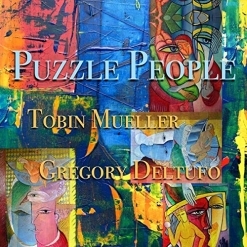
Click on album covers
to go to Kathy's reviews.
KP: You sound like a very proud grandpa! Wonder was one of your prog fusion albums. After that, came What Survives in 2020, which was almost 2 1/2 hours of music from your Broadway show, Creature, something of a rock opera inspired by the Frankenstein story. Tell us about that.
TM: “Creature” started off as a family show titled “Frankenspell Superstar”, written for my Wisconsin-based traveling CenterStage Theatre Troupe. They were a group of youths that achieved worldwide notoriety touring my environmental musical “To Save the Planet”. We performed “To Save the Planet” on the floor of the United Nations, which led to getting other plays into the off-Broadway circuit. I wrote the original 1-hour One Act “Frankenspell Superstar” in 1991. Then adapted it for a more adult New York audience as a full Two Act musical in 1993. It ran for a year off-off-Broadway. Then, in 1995, I was approached to rewrite it again, this time including puppetry (to portray the lab animals from Dr. Frankenstein’s laboratory, which made up the chorus). I had less control of that script and it never satisfied me. In 1996, I rewrote it again, this time self-producing it with my own investment team, shaping it into its final form, which eventually ran at The John Houseman Theater, Off-Broadway, as “Creature: The Man-made Messiah”. The chorus in this version was made up of the souls of people whose body parts contributed to the Creature, a far more dramatic and metaphorical idea. I fused progressive rock with jazz and gave Dr. Frankenstein’s fiancé, Elisabeth, a far greater role. Livent (the biggest stage touring company in the world) planned on expanding cast size, adding in a larger chorus, and began developing it in Germany, with the goal of bringing it back as a full Broadway extravaganza. However, Livent suddenly went bankrupt, following a terrible financial scandal, and then 9/11/2001 hit, shelving most dramatic shows for a while. My investment team disbanded and, poof, a decade of work went up in smoke. So I rented a space and recorded some of the music with my jazz ensemble in a 3-day recording session. That became What Survives, named after the finalé from “Creature”.
I tell you all this to explain how many times a single show needs to be rewritten, sometimes, and how many years it can take, how many different production teams get their say. When I started writing stage musicals, I’d write a show and it would be mounted within a year. By the end of my career, the average time inflated to 4-6 years. It’s one of the reasons shows cost so much more now.
The What Survives recording session, by the way, took place in 2000 in the choir room of Lawrence University. It was recorded by Sound City Studio (Los Angeles) and was the first time they used a new remote digital recording board. All the kinks hadn’t been worked out yet, resulting in some distortion and other issues. I’m so glad I was able to fix most of these issues 23 years later.
KP: That's an amazing story! In 2021, you released two more albums. The first one, Puzzle People, features Gregory Deltufo, your brother-in-law, speaking some of your poetry with your music behind it. What inspired that album?
TM: If you recall, 2021 was a very slow year for music activity, since most places were still caught in a web of Covid fears. I took advantage by completing a project I had started 15 years earlier: voicing my favorite poetry using my brother-in-law Gregory Deltufo (who lives across the street) and underscoring it with original music. The studio was empty. I brought in Gregory to recite my poetry. “Puzzle People” is the title of one of the poems. I also created
a series of videos illustrating the recordings, with the help of the Factory Underground Studio’s video guy, Gúzman Gonzalez. I learned a great deal about putting together videos, which has assisted me in my current work setting all the “Best Of” tracks to video.

Tobin & Gregory Deltufo
The content of all of the poems is very personal. The moments and people who inspired them are from varying experiences throughout my life. I encourage readers to go to my website to read the poems and listen to how Gregory interprets them. The music adds yet another layer of intrigue and meaning. Each poem is a story unto itself.
KP: The second album that year, Instead of Heaven, is a collection of ten solo piano meditations inspired by Greek mythology and arranged as an instrumental song cycle. Tell us about that one.
TM: I hadn’t written new music in a while, so those compositions sort of erupted out of me. Playing piano is my first love. Writing for piano is my favorite favorite creative activity. I can’t recall why I picked Greek mythology as a springboard, but I do recall that, mostly, I composed those pieces via improvisations and perfected them through hours of playing and choosing. Since I compose music like I write stories, I paid special attention to transitions, climactic builds, arranging variations so that they intertwined melody and countermelodies in constantly changing ways. I was deliberately shaping the harmonic contexts of each piece using modal jazz concepts, yet structuring them more like Impressionist or Romantic classical pieces. I wanted the work to have a timeless quality, yet be contemporary and innovative. I was striving for a sense of revelation in the emotions I communicated, much like what should happen when studying myths or scripture. That’s why I call them “piano meditations”.
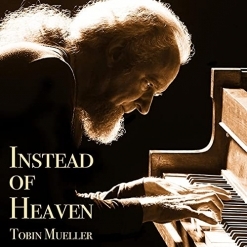
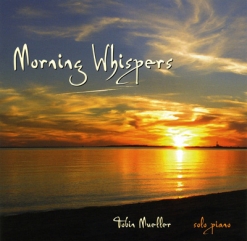
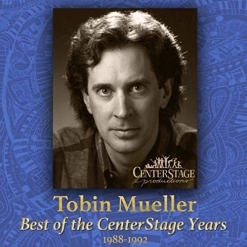
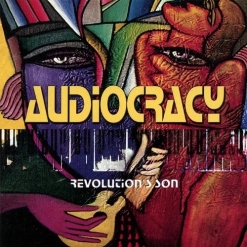
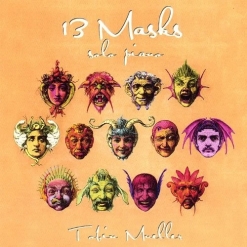
Click on album covers
to go to Kathy's reviews.
I encourage readers to check out the
music videos I did for Instead of Heaven on YouTube. I explain each myth with text and gorgeous classical artworks. The music doesn’t need this context, but it is very satisfying, nonetheless. Edifying, too.
We sometimes forget that human beings have been grappling with moral questions, psychological burdens, similar social, political, religious and personal issues for a very long time. I wanted to create a different kind of doorway into potential answers, one that tapped into the ancient yet pointed toward a fluid and buoyant future. Love, betrayal, hubris, loyalty, courage, retribution, reconciliation, faith and freedom are all issues discussed in the myths I chose. Hopefully, all these ideas can be heard in my playing.
KP: And then last year, you released Prestidigitation, which you have said is probably your last studio album. Does it still look like that's the case?
TM: Yes. I am too tired to do another full album, top to bottom. My wrists are in constant pain, although wearing a brace helps. My lungs are degraded. Of course, who knows what the future holds? Or how I will take retirement? Or if my health will suddenly improve? But that is the plan, to retire. I need to spend more time outside in the garden. And cleaning out the basement, if it’s too hot outside. And I have a stack a books I want to get to.
Prestidigitation is my last planned studio album. My last studio recording, however, is the single “First Contact” from Volume 5 of Best of Tobin Mueller. It includes a flugelhorn, which I’ve always wanted to write for.
KP: Let's talk about Prestidigitation a bit. If I remember correctly, only one of the pieces on that album was original and the others were original arrangements. What was the inspiration for that album?
TM: As I mentioned earlier, Prestidigitation was an extension of Standard Deviations, highlighting the second generation of Jazz Greats. It included pop music crossover artists like Sly Stone and Stevie Wonder, progressive rock-fusion artists like the prog band, Yes. When I started, I wanted the album full of fast playing, virtuosity that astounded. ("Prestidigitation" means “finger magic, sleight of hand”.) What I ended up with, instead, were intricate arrangements that placed great players into musical contexts to show off their talent, regardless of speed. We achieved a bunch of great soloing moments, unique sonic textures, high joy, really interesting ways to frame famous pieces, and a truly multi-dimensional sound. It is my best-sounding album, I think. We spent a great deal of time getting it right.
KP: I was surprised that seven of the tracks on your Best Of, Vol. 2 were from Prestidigitation so soon after that album was released. What compelled you to re-do those pieces?
TM: Well, if the whole idea of a Best Of series is to present the best versions of previous recordings, I couldn’t ignore Prestidigitation, my most successful release! Anyway, after releasing the album last year, the lead guitarist wanted to make some changes to the filters used on his guitar, I wanted to change a few balances in the mix (after listening a thousand times), and I overdubbed little sections to bring out things that got a bit lost in the first version, like the wah clavinet and a few organ passages. Picayune things that probable only I care about. So, of the 7 tracks we included, we remixed 3, with added layering in 2 of them. The idea of the 5-volume series is to have a digital place to go in order to hear my best work. We have succeeded.
KP: Absolutely - and that makes perfect sense. Do you plan to retire after you complete your current projects or do you have some more fascinating surprises up your sleeves?
TM: Retire. But continue to promote. Play music after dinner for my wife, if my wrists hold out.
KP: Is there anything else you'd like to "talk" about?
TM: Funny thing happened to me when I started to relax, to get rid of stress, to try and just stay alive. My brain slowed down. I stopped thinking up new things. I recall being surprised when Aaron Copland retired. He said that he’d played all the notes, all the chords. I feel a bit like that now. When I sit at the piano now, I go back to the songs I used to play as my Mother’s accompanist when I was a teenager: Hoagy Carmichael, Jerome Kern, Irving Berlin, George Gershwin. I think, gee, I wish I could have played them this well for her, back when I was a kid. So now I do duets with ghosts. (Did I say something like that when you interviewed me about my Chopin album?) I don’t want to repeat myself, creatively. But repeating memories has its own rewards.
I have precious memories. Playing music now is more about remembering, not creating. I guess that’s not too terrible?
KP: Not at all! You have given so much of yourself to the world through all of your creative endeavors, so you more than deserve some time to sit back and enjoy. Wishing you all the best! And I'm really looking forward to the piano albums coming up!
Many thanks to Tobin Mueller for taking the time to answer my questions and giving so much insight into his music. For more information about Tobin and his many projects, be sure to visit
his website and his
Artist Page here on MainlyPiano.com.
Kathy Parsons
July 2023

